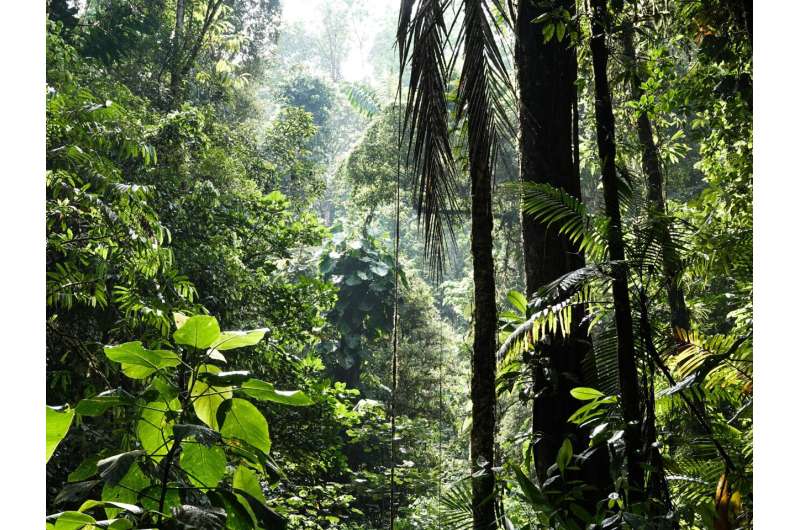Seed-handling ability is pivotal in seed dispersal in tropical rainforests

In a recent study published in Journal of Ecology, researchers have shown that seed-handling ability had the biggest effect on a disperser's importance. It had strong effects on three network metrics (species strength, ecological specialization, capacity to be a module hub) and moderated effects on connectivity between modules.
Large-bodied animals can play valuable roles in seed dispersal. However, the role of dispersers within networks is not limited by body mass. Smaller animals including birds, carnivores, rodents, and primates can also play essential seed dispersal roles.
To relate the importance of seed dispersers within the network to their ecological and morphological traits, researchers from the Xishuangbanna Tropical Botanical Garden (XTBG) of the Chinese Academy of Sciences and University of Nottingham Malaysia gathered data on their body mass, seed-handling ability (represented by the size of the largest seed dispersed by the animal in the network), and their main diet.
Using four network metrics—the degree of specialism (nested rank), species strength, z-value (capacity to be a module hub), and c-value (capacity to be a module connector), the researchers evaluated the effects of body size, diet, and seed-handling ability (size of the largest seed dispersed) on the relative importance of seed dispersers in a Sundaic rainforest, in Malaysia.
In the network, the importance of seed dispersers was related to their morphological and ecological traits. Since the animals with the ability to handle large seeds were ecologically generalized dispersers that strongly cohered and connected interaction clusters (modules), they played pivotal dispersal roles in the community.
The body mass was also notably important in determining connectivity within modules (z-value), although the effects of body mass were less prominent than seed-handling ability. The dietary differences defined the ecological specialization of species in seed dispersal.
The results demonstrated that while large-bodied dispersers are important, species of intermediate body size can also occupy a wide range of critical ecological positions in seed dispersal networks. The important dispersers in their network were large-seed dispersers (e.g., rats, gibbons), large-bodied animals, in particular the Asian elephant, and animals with frugivorous diets such as hornbills.
"This study fills important gaps in our identification of key seed disperser traits, by comparing the relative importance of animals in hyper-diverse tropical rainforests with a large spectrum of body sizes and seed-handling abilities," said Dr. Ahimsa Campos-Arceiz of XTBG.
More information: Lisa Ong et al, The ability to disperse large seeds, rather than body mass alone, defines the importance of animals in a hyper‐diverse seed dispersal network, Journal of Ecology (2021). DOI: 10.1111/1365-2745.13809
Journal information: Journal of Ecology
Provided by Chinese Academy of Sciences





















